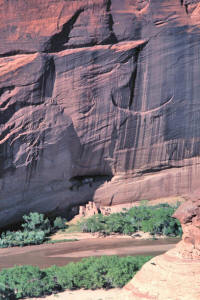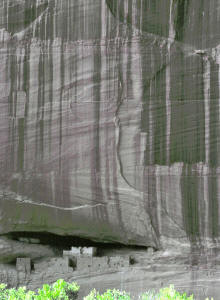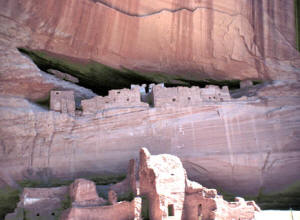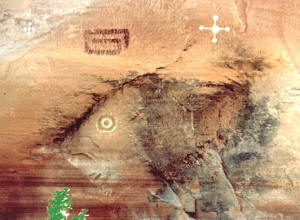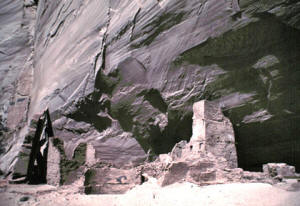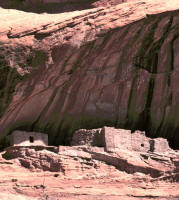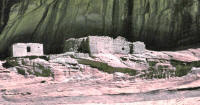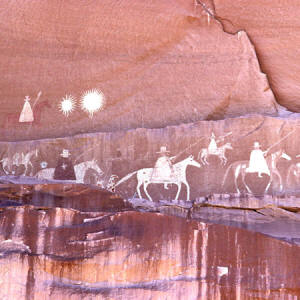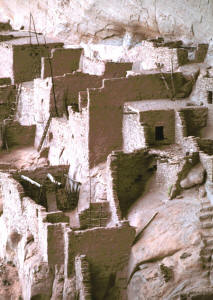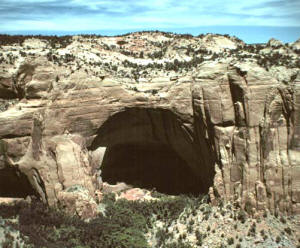|
A Photo Gallery from JamesQ.Jacobs Website
2000
The table below presents views of Canyon de Chelly National Monument in the Navajo Nation in Northeast Arizona. The monument actually encompasses several canyons, including Canyon del Muerto, Black Rock Canyon, Monument Canyon and Canyon de Chelly. Each thumbnail photo below is a link to a larger version of the same photograph. White House Ruin is the largest and most spectacular of the many Canyon de Chelly ruins. The lower ruin is visible at the cliff base adjacent to the shade line. The upper ruin of White House ruin is located in a cave. One of the most dramatic sheer cliff walls in the southwest crowns and dwarfs the ancient dwelling. Less than half the cliff's height is visible in this frame. The lower ruins rose high on the cliff walls, making access to the upper ruins possible. The ancient wall impressions and rock art reveal the locations of ancient room walls and roofs. In this extraordinary example of rock incorporation the concentric circles conveys the fish image. Canyon de Chelly rock art is bountiful. Antelope House is named for the nearby pictographs. This canyon floor ruin includes a tri-walled kiva. Many of the ruins are built on ledges above the canyon floor.
Navajo Pictograph of the
Narbona Expedition.
A Photo Gallery 2000
Betatakin Ruin, one of three spectacular cliff dwelings in Navajo National Monument, is located in the Navajo Nation in Northern Arizona. The monument contains some of the best ruins on the Colorado Plateau. Betatakin and Keet Seel are seasonally open to the public. The visitor center, which includes a museum, videos, gift shop and bookstore, is open daily. The images below are linked to larger versions. Betatakin is a 125 room cliff dwelling. Notice the intact roof ladders and earthen roofs. In this view the morning sun is illuminating the westernmost buildings under the immense south-facing sandstone arch. Rock art paintings are seen above the roofs of these rooms.
Betatakin can be viewed from an overlook, accessible by a one-mile round-trip walk. In this view the ruins are in the deep morning shade. The hike from the Betatakin trailhead is a strenuous five mile round trip. Tours begins at 8 a.m. and return between 12:00 and 1:00 p.m. This view greets the hiker while approaching from below. The trail begins on the mesa top above the ruin. Tsegi Canyon is the home of Navajo National Monument. This view is from the mouth of the canyon near Tsegi in Long Valley. Betatakin, Keet Seel and Inscription House are the three major ruins in Navajo National Monument. These are also the most important of the Kayenta Anasazi sites.
The three important divisions of Anasazi culture are Chaco, Mesa verde and Kayenta.
|
